I'm working on a POC to pull data from various liquidity pools (paired tokens, i.e. WEI/USDT from various exchanges.
In trying to create something like the DAI chart seen here:
I am trying to come up with a query and data model in JavaScript to contain this data.
The given would be "DAI". First get Uniswap results with DAI pools (any pool pairs containing "DAI"). Then get a list of results from SushiSwap of matching "WETH". Since both sources will likely not have all matching pools, with these two lists in memory, create a list of all items that match, i.e. USDT/WETH (matching in green in the image above).
I initially was going to create an associative array with a list of tokens to match:
poolList["Uniswap"] = { collection of pool objects }
poolList["Sushiswap"] = { collection of pool objects }
Where the collection data would looks something like
{
"data": {
"pools": [
{
"token0": {
"id": "0xc02aaa39b223fe8d0a0e5c4f27ead9083c756cc2",
"name": "Wrapped Ether",
"symbol": "WETH"
},
"token1": {
"id": "0xd1063ee5ec2891991a29fefb52bcc448cd386844",
"name": "BanDogge Mastiff",
"symbol": "DOGGE"
}
},
{
"token0": {
"id": "0xc02aaa39b223fe8d0a0e5c4f27ead9083c756cc2",
"name": "Wrapped Ether",
"symbol": "WETH"
},
How would one store the data from various exchanges so that either a filters list exists of common pairs, or create some sort of 2D array reflecting how the chart above appears?

